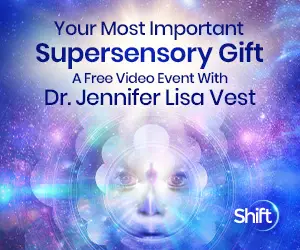By Sayer Ji
Contributing Writer for Wake Up World
A 2015 scientific review identified 25 of the top foods and herbs which kill cancer stem cells at the root cause of cancer malignancy.
There are thousands of natural compounds that have been studied with demonstrable anti-cancer activity (check out over 600 on GreenMedInfo’s cancer research database), but only a small subset of these have been proven to target and kill the cancer stem cells which lie at the root of cancer malignancy. Turmeric, for instance, we have featured a number of times for its “smart kill” property of targeting just the heart of cancerous tumors. More recently, ginger has been found in pre-clinical research to contain a compound up to 10,000 times more effective than the chemotherapy drug Taxol at killing breast cancer stem cells. Even common foods like blueberry have special cancer killing properties, as discussed in a previous article for GreenMedInfo: Research: Radiotherapy Causes Cancer, Blueberry Kills It.
A study published in the journal Anticancer Research, titled “Natural Products That Target Cancer Stem Cells“, has made our job much easier of identifying this special category of cancer killers by reviewing the extant literature on the topic and listing the top 25 substances in this category. They are listed here below, along with some of their commonly recognizable dietary sources.
25 Cancer Stem Cell Killing Foods
-
6-Gingerol – Ginger
-
?-Carotene – Carrot, Leafy Greens
-
Cyclopamine – Corn Lilly [we do not suggest consuming this plant; this simply illustrates natural components exist that kill cancer stem cells]
-
Delphinidin – Blueberry, raspberrry
-
Flavonoids (Genistein) – Soy, red clover, coffee
-
Gossypol – Cottonseed [we do not suggest consuming this plant; this simply illustrates natural components exist that kill cancer stem cells]
-
Guggulsterone – Commiphora (myrrh tree)
-
Isothiocyanates – Cruciferous vegetables
-
Linalool – Mint
-
Lycopene – Grapefruit, tomato
-
Parthenolide – Feverfew
-
Perylill alcohol – Mint, cherry, lavender
-
Piperine – Black pepper
-
Placycodon saponin – Playycodon grandifloruim
-
Psoralidin – Psoralea corylilyfolia
-
Quercetin – Capers, onion
-
Resveratrol – Grapes, plums, berries
-
Salinomycin – Streptomyces albus
-
Silibinin – Milk Thistle
-
Ursolic acid – Thyme, basil, oregano
-
Vitamin D3 – Fish, egg yolk, beef, cod liver oil
-
Withaferin A – Withania somnifera (ashwaganda)
Why are these substances so important?
The primary reason why conventional chemotherapy and radiotherapy have failed to produce any significant improvements in cancer survival rates is because cancer stem cells are resistant to these interventions. In fact, chemotherapy and especially radiation are both capable of increasing the number and virulence of these cells in a tumor, while at the same time having the well known side effect of further damaging the patient’s immune system.
While the cancer industry is still very much resistant to incorporating the implications of these findings into their standard of care (which is highly unethical), there are an increasing number of health practitioners that will not turn their back on the truth and are very much interested in alternative ways to prevent and treat cancer using food and/or plant-based approaches.
The new study addresses the relevance of cancer stem cells as follows:
The cancer stem cell model suggests that tumor initiation is governed by a small subset of distinct cells with stem-like character termed cancer stem cells (CSCs). CSCs possess properties of self-renewal and intrinsic survival mechanisms that contribute to resistance of tumors to most chemotherapeutic drugs. The failure to eradicate CSCs during the course of therapy is postulated to be the driving force for tumor recurrence and metastasis. Recent studies have focused on understanding the unique phenotypic properties of CSCs from various tumor types, as well as the signaling pathways that underlie self-renewal and drug resistance.”
At present, the cancer industry has failed to produce a single drug that targets the cancer stem cell population of cells within a tumor, as confirmed by the study:
If indeed the CSC response is a vital criterion for cancer treatment evaluation, there are still no drugs in clinical use that specifically target CSCs.
The ability to selectively target cancer cells, and cancer stem cells in particular, while leaving intact the non-tumor cells in tissue is extremely important. We have created a section on the GreenMedInfo database that indexes research on these substances and now includes 67 of them here. We are also building a section that collates research cancer stem cells, a topic will no doubt become a central part of the future of cancer treatment, assuming the priority is to actually alleviate suffering and not just make money off of patients.
Recommended articles by Sayer Ji:
- The Powerful Aspirin Alternative Your Doctor Never Told You About
- 13 Evidence-Based Medicinal Properties of Coconut Oil
- Group Drumming Better Than Prozac, Study Suggests
- 25 Cancer Stem-Cell Killing Foods That Are Smarter Than Chemo and Radiation
- Ibuprofen Can Stop Your Heart – 31% Increase in Cardiac Arrest Risk
- How Pomegranate Puts Chemo and Radiation to Shame
- Dramatic Recovery in Parkinson’s Patient with Gluten Free Diet
- 6 Bodily Tissues That Can Be Regenerated Through Nutrition
About the author:
Sayer Ji is the founder of Greenmedinfo.com, a reviewer at the International Journal of Human Nutrition and Functional Medicine, Co-founder and CEO of Systome Biomed, Vice Chairman of the Board of the National Health Federation, and Steering Committee Member of the Global Non-GMO Foundation.
For more, visit GreenMedInfo.com and Facebook.com/GreenMedInfo, or sign up for GreenMedInfo’s free e-Newsletter.
© October 29th, 2015 GreenMedInfo LLC. This work is reproduced and distributed with the permission of GreenMedInfo LLC. Want to learn more from GreenMedInfo? Sign up for their newsletter here.

If you've ever found value in our articles, we'd greatly appreciate your support by purchasing Mindful Meditation Techniques for Kids - A Practical Guide for Adults to Empower Kids with the Gift of Inner Peace and Resilience for Life.
In the spirit of mindfulness, we encourage you to choose the paperback version. Delve into its pages away from screen glare and notifications, allowing yourself to fully immerse in the transformative practices within. The physical book enriches the learning process and serves as a tangible commitment to mindfulness, easily shared among family and friends.
Over the past few years, Wake Up World has faced significant online censorship, impacting our financial ability to stay online. Instead of soliciting donations, we're exploring win-win solutions with our readers to remain financially viable. Moving into book publishing, we hope to secure ongoing funds to continue our mission. With over 8,500 articles published in the past 13 years, we are committed to keeping our content free and accessible to everyone, without resorting to a paywall.









